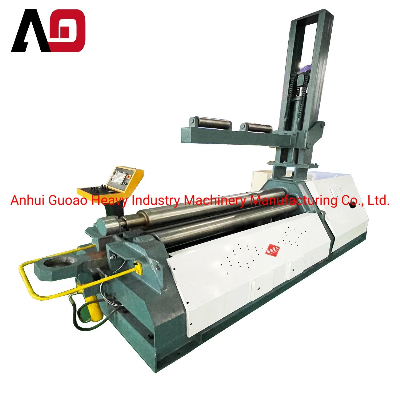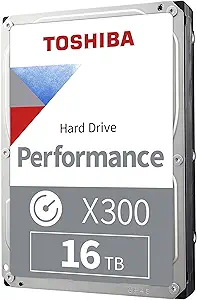Product DescriptionW12-6×1500 type four roll plate bending machine
is sheet metal bending, correction machinery. Special for sheet
metal forming bending work. The pre-bending and crimping of various
types of cylinder and arc workpiece can be completed after a
feeding. With the help of auxiliary devices, the conical cylinder
can be rolled. Rough shaping work can also be done on the sheet
metal.SpecificationsNo.ItemUnitFigure1Machine typemm6×15002Steel
plate bending forceMPa2353Steel plate max widthmm15004Steel plate
max pre bending thicknessmm55Steel plate max thicknessmm66Upper
roller diametermm1707Bottom roller diametermm1608Side roller
diametermm1409Rolling speedm/min410Minimum rolling
diametermm25011Bending angle ≥75°12Hydraulic system working
pressureMPa1613Motor powerKw4Overview of the main structure of the
product1. Structure overview1. The upper roller is an active
roller, the lower roller and the side roller are driven rollers,
the upper roller position is fixed, the lower roller and the side
roller can be lifted and moved, the upper roller is a mechanical
transmission, the rotation of the lower roller and the side roller
is driven by the friction between the steel plate and the rollers.
The lower roller and the side roller are driven by the two ends of
the oil cylinder to realize the lifting movement. The overturning
and resetting of the front bearing body of the upper roll is
carried out by the overturning oil cylinder, and each roller
bearing body and oil cylinder are installed in the left and right
ends of the frame. The left and right frame is the main body of the
four-roll plate rolling machine. It adopts welding structure and is
installed on the whole base. All operation of the machine is
carried out on the operating platform.Compared with the symmetrical
three-roll plate coiler, the four-roll plate coiler can directly
prebend the end of the plate without the aid of other equipment
mold, and the remaining straight edge is smaller; Compared with the
asymmetric three-roll plate coiling machine, it can not reverse the
plate, and roll into the workpiece. This not only improves the
efficiency, to ensure the quality of the workpiece, and the process
is simple, easy to operate, reduce the labor intensity of
workers.2. Main transmission mechanismThe upper roll of the
four-roll rolling machine is the main driving roll, which rotates
at a linear speed of about 5 meters per minute. The hydraulic motor
drives the gear reducer installed on the upper roll to drive the
upper roll to rotate.3. Auxiliary transmission mechanismThe
auxiliary drive of this machine is: the lifting of the lower roller
and the two sides of the roller, the toppling and resetting, all
adopt hydraulic drive, the lower roller and the two sides of the
roller can be lifted at the same time, can also be lifted
separately.Note: The maximum height difference between the two
sides of the side roller shall not exceed 20mm.4. Rolling
processThere are many kinds of rolling process, users can decide
according to their own process, the following provides a reference
(see Figure 3).a Operate the lower roller to rise so that its bus
bar is slightly greater than the working thickness of the lower
roller, then operate the side roller on the feeding side to make
its upper bus bar on the same level, and then operate the other
side to rise between the upper and lower rollers.b Feed: Feed the
steel plate horizontally, make the end of the steel plate contact
with the front roller to align, and then lower the front roller to
the original position.c Clamp the steel plate and prebend the end:
according to the thickness and material of the steel plate, adjust
the pressure of the lower roller loop to a certain value within the
range of 5-10Mpa, operate the lower roller to rise and clamp the
steel plate, and start the upper roller to rotate. When the steel
plate moves to the bending position, the upper roll stops rotating.
At this time, the left end of the center line of the upper and
lower roller should be left with the necessary clamping length
equal to 1.5 times the thickness of the plate. Then raise the back
side roller and prebend the end of the steel plate.d Prebend the
other end of the steel plate with the front roll. After the left
end is prebent, lower the back roll to the original position and
start the upper roll. When the steel plate moves to the above
bending position, the upper roll stops rotating. Operate the front
roller to rise the other end of the pre-bent steel plate, and
adjust the pressure of the roller loop on both sides at about
16-19.5Mpa.e Preliminary bending: Adjust the front and rear side
rolls to the corresponding positions required by the work, and
start the upper roll for the final forming bending.f forming
bending: Adjust the front and rear side rolls to the corresponding
positions required by the work, and start the upper roll for the
final forming bending.g Take out the workpiece: after bending,
lower the lower roll to the lowes
Related products about 4 Rolls Cylinder Boring Machine 11 8*2000 Building Materials Section Roller
-
 Waste Tyre Plastic Recycling Machinery Machine Tire Crusher Production Line Rubber Crumb Grinding Machine Equipment Tire Shredder
Waste Tyre Plastic Recycling Machinery Machine Tire Crusher Production Line Rubber Crumb Grinding Machine Equipment Tire Shredder
-
 Stretch Plastic Blowing Pet Bottle Making Blow Molding Machine Bottles Stretch Automatic Pet Bottle Blowing Machine
Stretch Plastic Blowing Pet Bottle Making Blow Molding Machine Bottles Stretch Automatic Pet Bottle Blowing Machine
-
 Waste Plastic Pet Bottle, Water Bottle Flake, PP/HDPE/LDPE PE Film Jumbo Woven Bags Plastic Crusher Machine, Plastic Crushing Washing Recycling Machine
Waste Plastic Pet Bottle, Water Bottle Flake, PP/HDPE/LDPE PE Film Jumbo Woven Bags Plastic Crusher Machine, Plastic Crushing Washing Recycling Machine
-
 Type 2 Wall-Mounted Electric Car Charging Station 7kw /11 Kwelectric Vehicle Charging Station Home Wallbox AC EV Charger Single Phase or 3three Phase
Type 2 Wall-Mounted Electric Car Charging Station 7kw /11 Kwelectric Vehicle Charging Station Home Wallbox AC EV Charger Single Phase or 3three Phase
-
 G-View G12W Wholesale Auto Car LED Headlight Bulb High Power H13 H11 9005 H7 H4 Car LED Headlights LED Car Lights
G-View G12W Wholesale Auto Car LED Headlight Bulb High Power H13 H11 9005 H7 H4 Car LED Headlights LED Car Lights
-
 New Design Porcelain Round Plates Dinner Set for Wedding and Banquet
New Design Porcelain Round Plates Dinner Set for Wedding and Banquet
-
 China 2023 New Design Super Soft 100% Polyester Microfiber Knitted Oversized Decoration Hoodie Blanket
China 2023 New Design Super Soft 100% Polyester Microfiber Knitted Oversized Decoration Hoodie Blanket
-
 Handmade Art Creative Materials Thickened White Paper Cup DIY Disposable Handmade Colored Paper Cup
Handmade Art Creative Materials Thickened White Paper Cup DIY Disposable Handmade Colored Paper Cup






